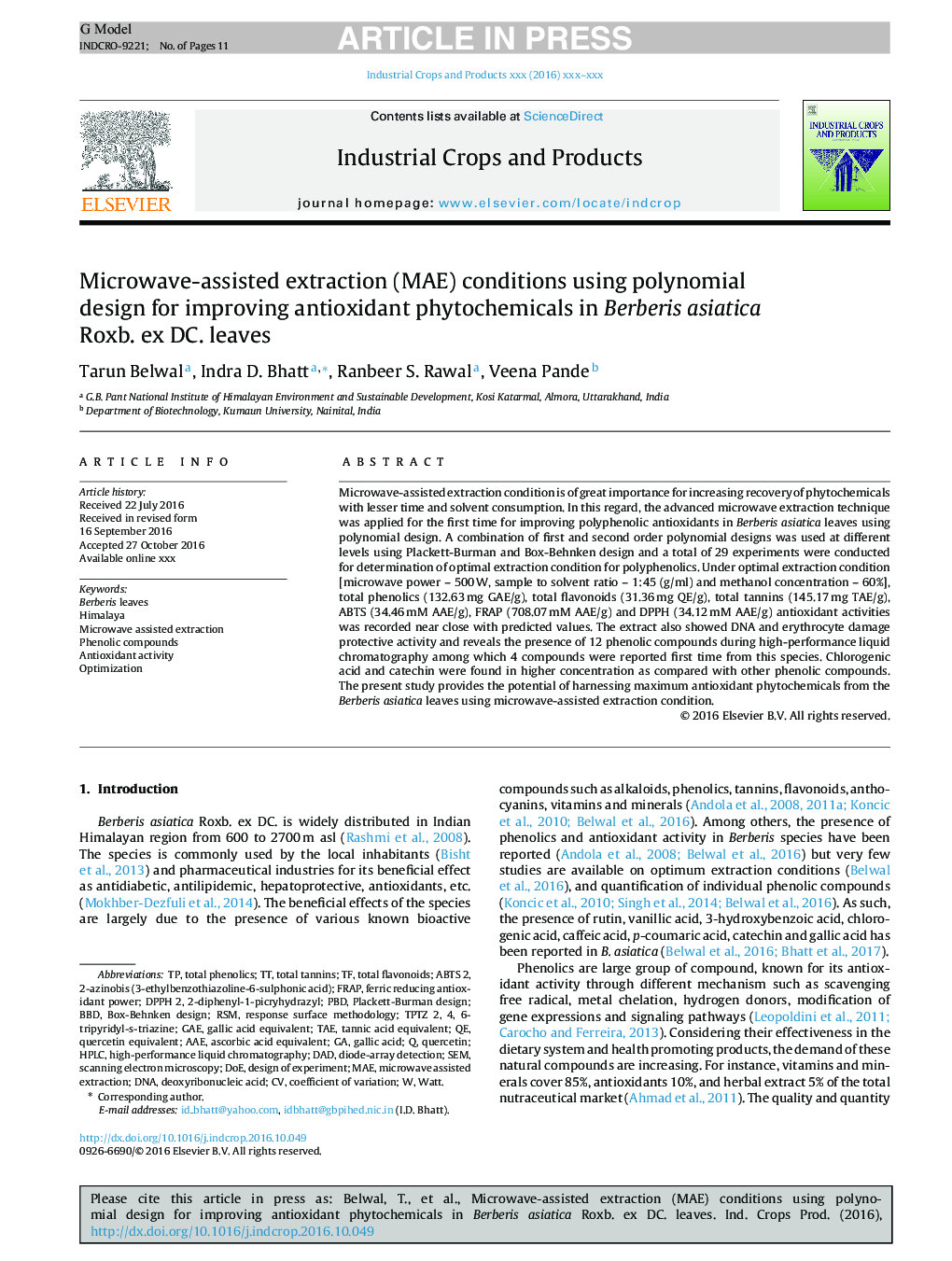| Article ID | Journal | Published Year | Pages | File Type |
|---|---|---|---|---|
| 8881035 | Industrial Crops and Products | 2017 | 11 Pages |
Abstract
Microwave-assisted extraction condition is of great importance for increasing recovery of phytochemicals with lesser time and solvent consumption. In this regard, the advanced microwave extraction technique was applied for the first time for improving polyphenolic antioxidants in Berberis asiatica leaves using polynomial design. A combination of first and second order polynomial designs was used at different levels using Plackett-Burman and Box-Behnken design and a total of 29 experiments were conducted for determination of optimal extraction condition for polyphenolics. Under optimal extraction condition [microwave power - 500Â W, sample to solvent ratio - 1:45 (g/ml) and methanol concentration - 60%], total phenolics (132.63Â mg GAE/g), total flavonoids (31.36Â mg QE/g), total tannins (145.17Â mg TAE/g), ABTS (34.46Â mM AAE/g), FRAP (708.07Â mM AAE/g) and DPPH (34.12Â mM AAE/g) antioxidant activities was recorded near close with predicted values. The extract also showed DNA and erythrocyte damage protective activity and reveals the presence of 12 phenolic compounds during high-performance liquid chromatography among which 4 compounds were reported first time from this species. Chlorogenic acid and catechin were found in higher concentration as compared with other phenolic compounds. The present study provides the potential of harnessing maximum antioxidant phytochemicals from the Berberis asiatica leaves using microwave-assisted extraction condition.
Keywords
DADFRAPPBDDOEBBDAAEGAEDNAdeoxyribonucleic acidMAEOptimizationPhenolic compoundsDiode-array detectionTAEResponse surface methodologyRSMCoefficient of Variationdesign of experimentPlackett-burman designBox-Behnken designAntioxidant activityMicrowave assisted extractionTotal tanninsSEMascorbic acid equivalenttannic acid equivalentGallic acid equivalentquercetin equivalentScanning electron microscopyHimalayaWattferric reducing antioxidant powerHPLChigh-performance liquid chromatographyTotal flavonoidsTotal phenolicsQuercetinGallic acid
Related Topics
Life Sciences
Agricultural and Biological Sciences
Agronomy and Crop Science
Authors
Tarun Belwal, Indra D. Bhatt, Ranbeer S. Rawal, Veena Pande,
